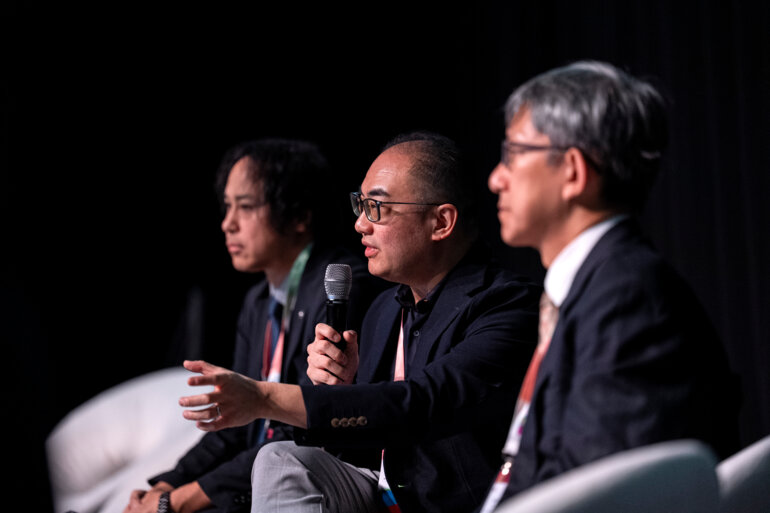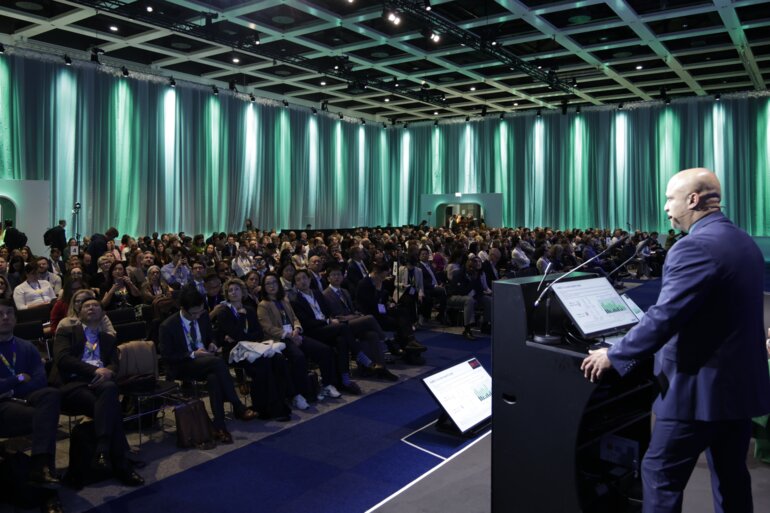Efficacy of targeted therapies has enabled unprecedented survival gains in the last few years, but Prof. Jean-Charles Soria believes overcoming drug resistance is likely to be a local battle fought in the tumour microenvironment
The recent history of medical oncology has seen innovation widen the panel of options for treating cancer patients in a more personalised and precise way. The number of novel targets of anticancer agents approved in the USA between 2010 and 2019 nearly doubled compared to the previous decade (J Clin Oncol. 2020;38(15_suppl):e14067), with the PD1-PDL1 axis blocked by immune checkpoint inhibitors having the highest number of approved indications across multiple tumour types.
Now, a tissue-agnostic approach is gaining ground to treat cancer regardless of its location in the human body. Are we in the midst of a new revolution that will change the way patients are treated? Despite being hopeful that these innovative therapies will give more patients the chance to be cured of their cancer in the future, Prof. Jean-Charles Soria, General Director of Gustave Roussy Cancer Campus, France, predicts that tumour-specific approaches will still be needed to overcome mechanisms of resistance.
New technologies and drugs have often been labelled ‘revolutionary’ in the high-stakes field of oncology. How have you seen innovation transform cancer care in the course of your career?
When I started thoracic oncology as a fellow in the mid 90s, I knew that the metastatic patients I saw in January would not make it to Christmas: for decades we simply did not have meaningful treatment options to offer them. Outcomes for non-metastatic lung cancer patients improved gradually with the refinement of surgical and radiotherapy techniques and adjuvant chemotherapy. It is only in the last 10 years that we have seen therapeutic innovations truly revolutionise cancer care: first with the advent of molecular targeted agents, then with the approval of immune checkpoint blockers, which have the advantage of not being conditioned on the presence of a specific gene mutation. Both have shown remarkable activity across a very large number of tumour types. Most recently the treatment of haematological cancers has been transformed by the success of adoptive cell therapy (Pharmaceutics 2020 February 24;12(2):194), and the first signs are here that its impact will extend also to solid tumours (Clin Cancer Res 2019 April;25(8):2560-2574). We are also seeing a new wave of optimised antibody-drug conjugates allowing smart delivery of chemotherapy to various tumour types (Clin Cancer Res 2019 Sep 15;25(18):5441-5448).
Since reaching the clinic, molecular targeted therapies and immune checkpoint blockers have become the standard first-line treatment for various tumour types. What have they changed for cancer patients?
Molecular targeted agents and immunotherapies were initially developed in the metastatic setting where, for lung cancer, patients’ median survival was previously 10 to 12 months from diagnosis, and five-year survival rates barely exceeded 5%. With the latest generations of tyrosine kinase inhibitors (TKIs) we are now seeing median survival times in the range of three to six years in this population (Ann Oncol. 2020 August 1;31(8):1056-1064), and although individual targetable mutations tend to be rare, taken together they are present in as many as 40% of adenocarcinomas (JAMA Oncol. 2018 April 1;4(4):569-570), the most common form of lung cancer. Similarly, PD1/PD-L1 inhibitors have raised five-year survival rates to between 15 and 20% of patients, and to almost one third of individuals with high levels of PD-L1 expression (Ann Oncol. 2020 September;31(4_suppl):s1181-s1182). These are momentous achievements.
The expectation now is that the benefits will be even greater in patients with earlier stages of disease. The indications of the PD-L1 antibody durvalumab have already been expanded to locally advanced lung cancer, where it significantly improves long-term survival compared to chemoradiotherapy alone, achieving a 31% reduction in the risk of death at three years (J Thorac Oncol. 2020 February 1;15(2):288-293). In the perioperative setting, adjuvant osimertinib radically extended EGFR-mutated patients’ disease-free survival in the ADAURA trial, with a hazard ratio of 0.2 reflecting an 80% reduction in the risk of recurrence compared to the placebo group (N Engl J Med. 2020 October 29;383(18):1711-1723). Positive results for the IMpower-010 trial of adjuvant atezolizumab have been recently presented (J Clin Oncol 39, 2021 (suppl 15; abstr 8500), and interim data from several ongoing neoadjuvant trials also suggest promising drug activity (Nat Rev Clin Oncol. 2021 April 28).
This progress in lung cancer is just one example of the advances happening across the oncology landscape and warrants the hope that, in addition to prolonging survival, we will be able to fully cure more patients going forward.
To what extent has the general drop in hazard ratios—understood as the magnitude of the survival benefit from a medicine—in recent clinical trials changed the scenario in cancer research?
Trials of molecular targeted agents typically yield high objective response rates (ORR) of 50% or more and unprecedented hazard ratios for progression-free survival (PFS) of 0.5 and lower. However, favourable hazard ratios for overall survival (OS) are lacking for these medicines: the readouts are still pending but a significant challenge is the confounding effect of second and third-line therapies administered to patients because, unfortunately, acquired resistance to TKIs is the rule.
The efficacy data for immunotherapy is more difficult to interpret because response rates are low—about 20% for lung cancer—and hazard ratios for PFS are either unfavourable or around 0.8 at best. This is equivalent to chemotherapy. Immunotherapies set themselves apart on OS, because the patients who respond do so for a long time, and a subset of perhaps 15% who do not develop resistance may even be cured. Nonetheless, the overall survival benefit does not far exceed 20% (JAMA Netw Open. 2020 August 7;3(8):e2012534).
It is clear that targeted agents are not cure-alls in oncology: rather than replacing previous therapies, they have widened the panel of options at our disposal while leaving plenty of room for improvement.
Could a tissue-agnostic approach unlock further improvements in cancer drug development?
The underlying premise that in the presence of a particular mutation, whatever the organ, you should see efficacy from a targeted agent, is an appealing prospect but its application is more complex than it seems. In the case of immunotherapy, we know that certain tumour characteristics found in multiple cancers are associated with improved treatment efficacy: high PD-L1 expression or tumour mutational burden, for example, could emerge as tissue-agnostic biomarkers to inform patient recruitment to future drug trials (Lancet Oncol. 2020 October 1;21(10):1353-1365).
However, we have to be realistic in our expectations because an organ can bring with it a specific molecular context that affects the clinical actionability of a particular aberration. The prototypical example of this is the BRAF mutation, for which the first-in-kind basket trial VE-BASKET (Cancer Discov. 2020 May;10(5):657-663) demonstrated clear activity of the targeted agent vemurafenib across 13 different tumour types, but failed in colorectal cancer. This is thought to be the result of colorectal tumours’ dependence on an EGFR signalling pathway that is activated when the BRAF signal is blocked and which leads to treatment resistance, with the implication that specific combination therapies need to be explored in this setting (Cancer Discov. 2018 April;8(4):428-443). Organ-dependent compensatory mechanisms of this kind will make the agnostic approach challenging.








